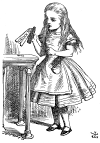Brand New
This just in.
Dear Word Detective: I’ve always thought the term was “brand new,” but was re-reading E.M. Delafield’s “Diary of a Provincial Lady” recently, and noticed that she twice wrote “bran-new.” What is the origin of this term? Have I been mishearing it as “brand new,” or has it evolved? — Megan Coughlin.
This is an interesting question. I actually answered a similar query about twelve years ago, but in that case a reader had seen “bran-new” in a newspaper, where it could easily have been a typographical error. This time we’re talking about a very well-known semi-autobiographical novel that has been in print since 1930 and is widely considered a classic work of humor in Britain.
Incidentally, I was vaguely aware of E.M. Delafield (pen name of, fasten your seatbelts, Edmée Elizabeth Monica Dashwood), but have never read “Diary of a Provincial Lady.” According to Wikipedia, it’s a novel in the “form of a journal of the life of an upper-middle class Englishwoman living mostly in a Devon [England] village of the 1930s.” I found a brief excerpt online, and it seems to be the sort of thing I like, so I’ll add it to my to-read list (which, unfortunately, stretches through 2075 at this point). By the way, if I were going to recommend one book to anyone contemplating moving to rural Ohio, it would be “Cold Comfort Farm” by Stella Gibbons. It’s where I learned to wash dishes with a twig.
“Brand new,” of course, means “completely new, unused,” and has been in constant use since at least the late 16th century. The “brand” in “brand-new” (the hyphenated original form) is “brand” in its Old English sense of “burning piece of wood” or, more generally, “fire.” Something that is “brand new” is as new as if it had just emerged from the fire of a forge (e.g., a sword) or kiln (pottery, etc.). Shakespeare expressed the same concept in his use of the similar phrase “fire-new.” The use of “brand” to mean “proprietary name for one’s product” in the “Coke” sense is a later use of “brand,” most likely taken from the vintners’ practice of marking wooden wine casks with an iron “brand” heated in a fire.
The spelling “bran-new” might seem like a recent mutation, but it’s actually been fairly common since about 1714, cropping up in both Dickens and Twain. This spelling seems to be a case of “folk etymology,” in which an unfamiliar element (“brand”) is replaced by a more familiar one (‘bran”). A similar process transformed “buttonhold” (originally a loop of string) into “buttonhole.” The fact that the “d” in “brand new” is usually not pronounced probably added to the evolution of “bran-new.”
Ironically, the fact that “brand” has become a far more common word in the past hundred years has short-circuited this process of modification, and made “bran-new” less acceptable than it once was. E.M. Delafield got away with it in 1930, but it would be hard to find an editor or teacher today who did not consider “bran-new” an error.
Page 1 of 2 | Next page
